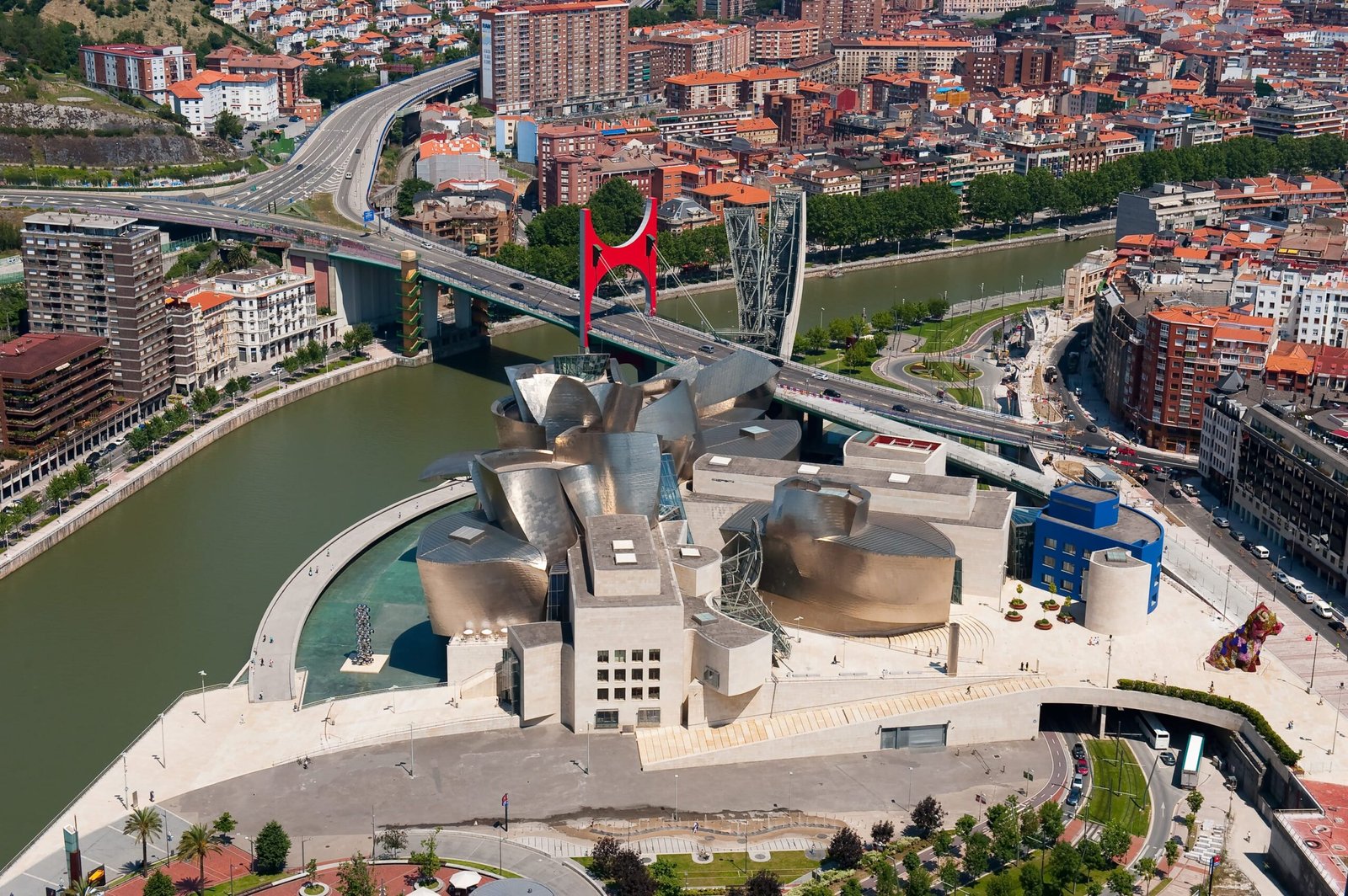Guggenheim Museum Bilbao celebrates its 20th anniversary on October 19, 2017.
It was 20 years ago that the Guggenheim Museum debuted in Bilbao, transforming a struggling industrial city into a cultural centre. The Frank Gehry-designed structure is now a city landmark.
Recently, the term “Guggenheim impact” has gained currency.
Bilbao’s Nervion River architectural miracle has achieved the unexpected: It has altered the face of a city that was thought to have lost in the last 20 years.

Located in the north of Spain, Bilbao sits on the Atlantic gulf of the Bay of Biscay. Throughout most of the 20th century, it was the Basque Country’s primary industrial harbour. Bilbao’s economy, which relied heavily on shipbuilding, coal, and steel production, was booming at the time.
In spite of this, the industry failed to keep up with the rapid changes in technical requirements. It was necessary to shut down the shabby dockyards and factories. Iron and steel works were demolished. Several workers and their families left the city, while others remained, but without any hope of employment or a brighter future.The Basque separatist group ETA, which carried out numerous terrorist assaults from its base in Bilbao, also had a foothold there.
In light of this, the city’s small population of ardent art enthusiasts made the announcement of an ambitious cultural endeavour there seem like a far-fetched joke.
The American Guggenheim Foundation was in talks with a number of major towns in Europe in the early 1990s about establishing a museum there. The city of Bilbao’s officials were the most enthusiastic about the proposal. There was no doubt in their minds that the famed temple of art would be a boon to the desolate city.
As part of the agreement, the Guggenheim Foundation would fill the museum with artworks from its collection and operate it, while the Basques would give the space and funding.Locals were outraged, wondering why the city of Bilbao would spend millions on a museum instead of upgrading its factories to better serve its residents.Even the artists in the region feared that they would be ignored by the American cultural imperialism in the region.
According to a feasibility analysis conducted by the Guggenheim Foundation, the museum might draw as many as 500,000 visitors annually. That appeared to be a mirage. Despite this, the arrangement was accepted by all parties involved.
On October 19, 1997, then-King Juan Carlos inaugurated the Guggenheim Museum on Avenida Abandoibarra.
When a building is this beautiful, ” the art,” stated US architect Philip Johnson, who went on to describe the project as “the finest architecture of our time.” The skyscraper has been widely praised.
Visitors from all around the world flocked to the museum, which was crowded with art and architecture enthusiasts. The 500,000 visitors a year that had been predicted has now risen to a staggering a million.
From Yves Klein and Robert Rauschenberg to Andy Warhol, Robert Rauschenberg, Gerhard Richter and Jeff Koons, about 170 shows have been held to date. In addition, the museum’s area dedicated to Spanish and Basque artists allayed initial concerns.
Other famous architects were brought in, including Norman Forster, to help revitalise Bilbao. A university constructed by Alvaro Siza and an airport terminal designed by Salvadore Calatrava can be found near the museum on the “Zubizuri” pedestrian bridge.
Restaurants serving the best Basque cuisine swiftly followed in the footsteps of upscale hotels and stores.









